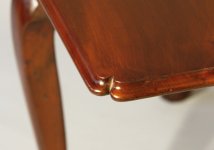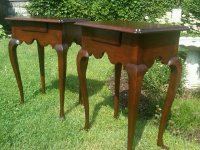I first saw this corner detail on the handkerchief table that Gene Landon wrote about in FWW and I saw it again on a QA dressing table in a private collection. I've used it on a couple of my projects and I was curious it it had a name. Mr. Landon only referred to it as the corner detail.
-Chuck
-Chuck


